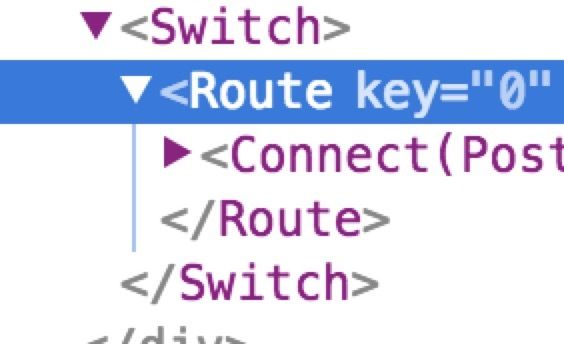- 【JavaScript】11-JS高阶技巧
beibeibeiooo
JavaScript【已完结】javascript前端ecmascriptes6
本文介绍JS中的一些高阶技巧。目录1.深浅拷贝1.1浅拷贝1.2深拷贝1.2.1通过递归实现1.2.2lodash/cloneDeep1.2.3JSON.stringify()2.异常处理2.1throw抛异常2.2try/catch捕获异常2.3debugger3.处理this3.1this指向3.1.1普通函数this3.1.2箭头函数的this3.2改变this3.2.1call方法改变3.
- 如何用PHP开发一个api数据接口
幽蓝计划
php
对于一个iOS开发者来说,我一直觉得会写接口是一件很酷的事情,因为它可以实时修改前台数据,而不像App一样需要更新版本和接受审核。更重要的是,它意味着你的技术完成了一个闭环,可以独自完成一整个项目的开发。PHP是我接触的第一个脚本语言,使用之后更是感觉PHP功能强大,开发过程非常友好方便,虽然之后也学习过Python、JavaScript等语言,但现在还是习惯使用PHP,下面就来介绍一下如何用PH
- COMP 315: Cloud Computing for E-Commerce
后端
Assignment1:JavascriptCOMP315:CloudComputingforE-CommerceFebruary20251IntroductionAcommontaskwhenbackendprogrammingisdatacleaning,whichistheprocessoftakinganinitialdatasetthatmaycontainerroneousorinco
- 探究Three.js中模型移动与旋转的交互逻辑
Front_Yue
3D技术实践指南javascriptthree.js3d
前言Three.js作为一个功能强大的JavaScript3D库,极大地简化了在网页上创建和展示3D图形的过程。它在游戏开发、产品展示、虚拟现实等众多领域都被广泛应用。通过Three.js,开发者能够轻松创建出复杂的三维场景和交互性强的3D应用,为用户带来沉浸式的体验。一、模型移动的交互逻辑实现(一)键盘控制模型移动利用键盘事件来控制模型在三维空间中的位置移动,是一种常见且便捷的交互方式。以下为具
- 从零开始:使用原生JS打造简易飞机大战游戏
西域情歌
本文还有配套的精品资源,点击获取简介:在本教程中,我们将探讨如何利用原生JavaScript的特性,包括事件处理、DOM操作、定时器和音频处理,来构建一个基础的“飞机大战”游戏。该游戏的核心元素包括玩家飞机、敌机、子弹和碰撞检测,它们通过HTML和CSS展现在页面上。通过编写JavaScript脚本,我们实现游戏对象的创建与状态管理,响应用户的键盘和点击事件,更新游戏内容,并通过定时器维护游戏循环
- React 18 如何定义变量,及赋值 与渲染
痴心阿文
Reactreact.jsjavascript前端
React18中,定义变量、赋值和渲染的方式因变量的用途和作用域不同而有所差异,下面为你详细介绍不同场景下的实现方法。1.函数组件内定义普通变量在函数组件里,你可以像在普通JavaScript函数中一样定义变量,并且这些变量会在每次组件重新渲染时重新创建。importReactfrom'react';constMyComponent=()=>{//定义普通变量并赋值constmessage='He
- 使用Three.js渲染器创建炫酷3D场景
Front_Yue
3D技术实践指南javascriptthree.js3d
引言在当今数字化的时代,3D图形技术正以其独特的魅力在各个领域掀起波澜。从影视制作到游戏开发,从虚拟现实到网页交互,3D场景以其强烈的视觉冲击力和沉浸式的体验,成为了吸引用户、传达信息的重要手段。而Three.js,作为一款功能强大且广受欢迎的JavaScript3D库,为我们提供了便捷、高效的途径来创建令人炫目的3D场景。本文将深入探讨使用Three.js渲染器创建炫酷3D场景的方方面面,带领读
- 04.文本标签
龙哥带你学编程
#html前端
一、文本简介1、页面组成元素1)以淘宝购物官网为例,分析网页:在淘宝购物官网的首页上,我们可以看到它是由超链接,文字,图片等元素构成。2)页面组成元素①一个静态页面绝大部分由以下四种元素组成:文本图片超链接音频和视频②思考:符合以下特点的网页是静态还是动态页面?带有音频和视频带有flash动画带有css动画带有JavaScript特效不是。动态页面和静态页面区别在于:是否用到了后端技术,以及是否与
- 9种JavaScript数组去重的高阶方法
2501_90226133
javascriptjava算法
给定一个数组[1,2,2,4,null,null,‘3’,‘abc’,3,5,4,1,2,2,4,null,null,‘3’,‘abc’,3,5,4]去除重复项。letarr=[1,2,2,4,null,null,‘3’,‘abc’,3,5,4,1,2,2,4,null,null,‘3’,‘abc’,3,5,4]1、利用对象的key唯一众所周知,对象的key不可重复,否则后者将覆盖前者。利用该特性
- Ark-TS 语言:鸿蒙生态的高效开发利器,让我们用大白话说一说
harmonyos-next
Ark-TS(华为专门为鸿蒙系统——就是华为自己的手机、平板、智能设备操作系统——设计的编程语言,基于TypeScript,一种比普通JavaScript更严格、能减少错误的语言)是鸿蒙应用开发的主力工具。它就像给开发者配备了一套趁手的工具包,让写代码又快又稳。简单来说,Ark-TS有几个厉害的地方:静态类型检查(写代码时必须给变量指定类型,比如数字、文字,这样电脑能在运行前就发现类型错误,避免程
- 单例模式实现
后端
一、是什么单例模式(SingletonPattern):创建型模式,提供了一种创建对象的最佳方式,这种模式涉及到一个单一的类,该类负责创建自己的对象,同时确保只有单个对象被创建在应用程序运行期间,单例模式只会在全局作用域下创建一次实例对象,让所有需要调用的地方都共享这一单例对象,如下图所示:二、实现在javascript中,实现一个单例模式可以用一个变量来标志当前的类已经创建过对象,如果下次获取当
- JavaScript HTML DOM 节点列表
宇哥资料
JavaScriptjavascripthtml开发语言
NodeList对象是一个从文档中获取的节点列表(集合)。NodeList对象类似HTMLCollection对象。一些旧版本浏览器中的方法(如:getElementsByClassName())返回的是NodeList对象,而不是HTMLCollection对象。所有浏览器的childNodes属性返回的是NodeList对象。大部分浏览器的querySelectorAll()返回NodeLis
- js知识点-拓展运算符和剩余运算符
lmryBC49
javascript开发语言ecmascript
概述在现代JavaScript开发中,ES6引入的拓展运算符(SpreadOperator)和剩余运算符(RestOperator)让代码更加简洁和灵活。无论是数组、对象的拆分与合并,还是函数参数的处理,这两个运算符都是非常实用的工具。拓展运算符1.什么是拓展运算符?拓展运算符(SpreadOperator)由三个连续的点...表示,用于将一个可迭代对象(例如数组、字符串等)展开成多个元素。拓展运
- Vue.js 性能优化:虚拟 DOM 与虚拟滚动
vvilkim
vuevue.js前端javascript
在现代前端开发中,性能优化是一个永恒的话题。Vue.js作为一款流行的前端框架,提供了许多强大的工具和技术来提升应用的性能。其中,虚拟DOM和虚拟滚动是两个非常重要的概念。本文将深入探讨它们的原理、优势以及如何在Vue.js中使用它们来优化性能。什么是虚拟DOM?虚拟DOM(VirtualDOM)是Vue.js用于提升性能的核心技术之一。它是一个轻量级的JavaScript对象树,用于表示真实DO
- 用python执行js代码:PyExecJS库详解
数据知道
2025年爬虫和逆向教程pythonjavascript爬虫数据采集nodejs
更多内容请见:爬虫和逆向教程-专栏介绍和目录文章目录1.介绍和安装1.1PyExecJS介绍1.2安装JavaScript运行时1.3安装PyExecJS2.PyExecJS的基本使用2.1执行简单的JavaScript代码2.2使用外部JavaScript文件2.3先编译、后调用2.4传递参数和获取返回值3.PyExecJS的高级功能3.1指定JavaScript运行时3.2处理异步JavaSc
- 5-1 使用ECharts将MySQL数据库中的数据可视化
上课的牛马
实训大数据
方法一:使用PythonFlask框架搭建API对于技术小白来说,使用ECharts将MySQL数据库中的数据可视化需要分步骤完成。以下是详细的实现流程:一、技术架构后端服务:使用PythonFlask框架搭建API(简单易学,适合新手)数据库连接:通过Python的pymysql库连接MySQL前端可视化:HTML+JavaScript+ECharts数据流向:MySQL数据库→Pyt
- 前端面试:[React] Recoil 里面 selector 支持哪些参数?
returnShitBoy
前端面试react.js
在Recoil中,selector用于派生状态并可以通过传递不同的参数来实现更强大的功能。创建selector时,可以传入以下参数:1.key类型:string描述:是selector的唯一标识符。每个selector和atom都必须有一个唯一的key,否则会抛出错误。这个key用于在Recoil状态树中进行识别。示例:javascriptconstmySelector=selector({key
- 使用Three.js渲染器创建炫酷3D场景
引言在当今数字化的时代,3D图形技术正以其独特的魅力在各个领域掀起波澜。从影视制作到游戏开发,从虚拟现实到网页交互,3D场景以其强烈的视觉冲击力和沉浸式的体验,成为了吸引用户、传达信息的重要手段。而Three.js,作为一款功能强大且广受欢迎的JavaScript3D库,为我们提供了便捷、高效的途径来创建令人炫目的3D场景。本文将深入探讨使用Three.js渲染器创建炫酷3D场景的方方面面,带领读
- 用Babel操作AST实现JavaScript代码的自动化生成与转换
目录目录环境搭建代码:修改AST的逻辑重命名函数名重命名变量并修改变量值函数调用替换控制流扁平化还原删除未使用的变量对象属性简化条件表达式优化表达式还原环境搭建安装环境npminstall@babel/parser@babel/traverse@babel/generator@babel/typesast转换的代码框架constfs=require('fs');constvm=require('n
- Node.js 格式化时间的两种方法:原生 Date 与 npm 包 moment 详解
还是鼠鼠
node.jsnode.jsnpm前端javascriptvscode
目录Node.js格式化时间的两种做法:内置方法与npm包1.使用JavaScript内置方法格式化时间示例:使用Date对象格式化时间运行程序示例输出原理解析2.使用npm包moment进行时间格式化安装moment示例:使用moment格式化时间运行程序示例输出原理解析3.两种方法的对比4.结论在Node.js开发中,格式化时间是一个常见的需求。例如,将时间格式化为YYYY-MM-DDHH:m
- JavaScript 中的性能优化:从基础到高级技巧
lina_mua
深入javascript性能优化开发语言
1.引言1.1性能优化的重要性在现代前端开发中,性能优化是提升用户体验的关键。无论是页面加载速度、交互响应时间,还是内存占用,性能优化都能显著提升应用的流畅度和用户满意度。1.2本文的目标本文旨在深入探讨JavaScript中的性能优化,从基础到高级技巧,帮助开发者理解性能优化的核心概念,并掌握其在实际开发中的应用。2.性能优化的基础2.1什么是性能优化?性能优化是指通过改进代码、减少资源消耗、优
- JavaScript 模块化语法 import、export详解
qq39138814
javascript开发语言ecmascript
JavaScript模块化语法import、export详解1.为什么需要模块化?在JavaScript早期,所有代码都是写在一个全局作用域中,这样做的问题是:变量污染:所有变量、函数都是全局的,容易互相干扰。文件依赖管理困难:多个JS文件之间的依赖关系混乱,难以维护。代码复用困难:无法方便地拆分和复用代码。为了解决这些问题,模块化方案应运而生。2.JavaScript模块化的发展2.1早期的模块
- 从 0 到 1 搭建一个 Web 应用项目:详细步骤与踩坑记录
算法探索者
前端
一、引言在当今数字化时代,Web应用无处不在。对于开发者而言,掌握从0到1搭建Web应用项目的技能至关重要。本指南将带你逐步完成一个简单Web应用项目的搭建,分享技术选型思路以及在过程中遇到的问题和解决方案,助力你开启Web开发之旅。二、技术选型(一)前端框架:选择React.js。它具有高效的虚拟DOM机制,能够快速更新页面,提升用户体验。同时,React生态系统丰富,有大量现成的组件库和工具可
- JavaScript对象全解析:从宿主到内置,深入理解对象分类
码农的时光故事
前端javascript
一、JavaScript对象全景图JavaScript对象系统远比表面看起来复杂,我们可以将其分为以下五大类:类别描述示例宿主对象由运行环境提供的对象(如浏览器中的DOM)window、document固有对象标准规定随运行时自动创建的基础对象Array、Date原生对象通过内置构造器创建的特权对象newArray()、newMap()普通对象用户创建的常规对象{}、newObject()特殊行为
- ROS CDK魔法书:建立你的游戏王国(JavaScript篇)
阿里云CloudOps
资源编排ROS游戏javascript开发语言阿里云ROSCDK
引言在虚拟游戏的世界里,数字化的乐趣如同流动的音符,谱写着无数玩家的共同回忆。而在这片充满创意与冒险的乐园中,您的使命就是将独特的游戏体验与丰富的技术知识相结合,打造出令人难以忘怀的作品。当面对如何实现这一宏伟蓝图时,您或许会想:如何将一款简单而富有趣味的游戏部署到云端,使更多玩家共享这份乐趣?别担心,现在您手中握有一把开启无限可能的大门钥匙——阿里云资源编排服务(ResourceOrchestr
- leetcode刷题(javaScript)——栈、单调栈相关场景题总结
三月的一天
Leetcode刷题技巧总结javascriptleetcodelinux
在LeetCode刷题中,栈是一个常用的数据结构,可以帮助解决很多问题。以下是一些需要使用栈的方法,以及单调栈的应用场景:栈的使用技巧:栈常用于解决与括号匹配相关的问题,如括号序列的有效性、最长有效括号等。栈也常用于解决逆波兰表达式、表达式求值等与计算相关的问题。栈可以用于解决深度优先搜索(DFS)中的回溯问题,如组合、排列等。栈还可以用于解决某些需要“后进先出”(LIFO)特性的问题,如某些遍历
- Node.js技术原理分析系列6——基于 V8 封装一个自己的 JavaScript 运行时
前端node.js
Node.js是一个开源的、跨平台的JavaScript运行时环境,它允许开发者在服务器端运行JavaScript代码。Node.js是基于ChromeV8引擎构建的,专为高性能、高并发的网络应用而设计,广泛应用于构建服务器端应用程序、网络应用、命令行工具等。本系列将分为9篇文章为大家介绍Node.js技术原理:从调试能力分析到内置模块新增,从性能分析工具perf_hooks的用法到ChromeD
- python函数支持哪些参数类型_Python函数的几种参数类型
weixin_39965283
以下代码均以Python3为基础理解。初识Python函数大部分常见的语言如C、Java、PHP、C#、JavaScript等属于C系语言,Python不属于他们中的一员(ruby亦然)。在这些语言中,Python也属于比较新奇的一派,就函数来说,它没有大括号,用def关键字定义一个函数,定义后用:然后换行tab指定函数函数的范围,当然也不存在什么分号。作为一个函数,那个它肯定是有参数的,Pyth
- TypeScript模块 vs JavaScript模块:现代化开发的模块化之道
念九_ysl
typescript前端typescript
一、模块化开发的重要性在当今前端开发领域,模块化已成为构建可维护、可扩展应用程序的基石。无论是小型项目还是企业级应用,良好的模块化设计都能显著提升代码的可读性和复用性。让我们通过一个简单对比示例开始:JavaScript实现://math.jsexportfunctionadd(a,b){returna+b}//app.jsimport{add}from'./math.js';console.lo
- 深入理解Ajax原理
lfsf802
前端技术ajaxxmlhttprequestjavascript服务器asynchronous
1.概念ajax的全称是AsynchronousJavaScriptandXML,其中,Asynchronous是异步的意思,它有别于传统web开发中采用的同步的方式。2.理解同步异步异步传输是面向字符的传输,它的单位是字符;而同步传输是面向比特的传输,它的单位是桢,它传输的时候要求接受方和发送方的时钟是保持一致的。举个例子来说同步和异步,同步就好像我们买楼一次性支付,而异步就是买楼分期付款。所以
- ASM系列六 利用TreeApi 添加和移除类成员
lijingyao8206
jvm动态代理ASM字节码技术TreeAPI
同生成的做法一样,添加和移除类成员只要去修改fields和methods中的元素即可。这里我们拿一个简单的类做例子,下面这个Task类,我们来移除isNeedRemove方法,并且添加一个int 类型的addedField属性。
package asm.core;
/**
* Created by yunshen.ljy on 2015/6/
- Springmvc-权限设计
bee1314
springWebjsp
万丈高楼平地起。
权限管理对于管理系统而言已经是标配中的标配了吧,对于我等俗人更是不能免俗。同时就目前的项目状况而言,我们还不需要那么高大上的开源的解决方案,如Spring Security,Shiro。小伙伴一致决定我们还是从基本的功能迭代起来吧。
目标:
1.实现权限的管理(CRUD)
2.实现部门管理 (CRUD)
3.实现人员的管理 (CRUD)
4.实现部门和权限
- 算法竞赛入门经典(第二版)第2章习题
CrazyMizzz
c算法
2.4.1 输出技巧
#include <stdio.h>
int
main()
{
int i, n;
scanf("%d", &n);
for (i = 1; i <= n; i++)
printf("%d\n", i);
return 0;
}
习题2-2 水仙花数(daffodil
- struts2中jsp自动跳转到Action
麦田的设计者
jspwebxmlstruts2自动跳转
1、在struts2的开发中,经常需要用户点击网页后就直接跳转到一个Action,执行Action里面的方法,利用mvc分层思想执行相应操作在界面上得到动态数据。毕竟用户不可能在地址栏里输入一个Action(不是专业人士)
2、<jsp:forward page="xxx.action" /> ,这个标签可以实现跳转,page的路径是相对地址,不同与jsp和j
- php 操作webservice实例
IT独行者
PHPwebservice
首先大家要简单了解了何谓webservice,接下来就做两个非常简单的例子,webservice还是逃不开server端与client端。我测试的环境为:apache2.2.11 php5.2.10做这个测试之前,要确认你的php配置文件中已经将soap扩展打开,即extension=php_soap.dll;
OK 现在我们来体验webservice
//server端 serve
- Windows下使用Vagrant安装linux系统
_wy_
windowsvagrant
准备工作:
下载安装 VirtualBox :https://www.virtualbox.org/
下载安装 Vagrant :http://www.vagrantup.com/
下载需要使用的 box :
官方提供的范例:http://files.vagrantup.com/precise32.box
还可以在 http://www.vagrantbox.es/
- 更改linux的文件拥有者及用户组(chown和chgrp)
无量
clinuxchgrpchown
本文(转)
http://blog.163.com/yanenshun@126/blog/static/128388169201203011157308/
http://ydlmlh.iteye.com/blog/1435157
一、基本使用:
使用chown命令可以修改文件或目录所属的用户:
命令
- linux下抓包工具
矮蛋蛋
linux
原文地址:
http://blog.chinaunix.net/uid-23670869-id-2610683.html
tcpdump -nn -vv -X udp port 8888
上面命令是抓取udp包、端口为8888
netstat -tln 命令是用来查看linux的端口使用情况
13 . 列出所有的网络连接
lsof -i
14. 列出所有tcp 网络连接信息
l
- 我觉得mybatis是垃圾!:“每一个用mybatis的男纸,你伤不起”
alafqq
mybatis
最近看了
每一个用mybatis的男纸,你伤不起
原文地址 :http://www.iteye.com/topic/1073938
发表一下个人看法。欢迎大神拍砖;
个人一直使用的是Ibatis框架,公司对其进行过小小的改良;
最近换了公司,要使用新的框架。听说mybatis不错;就对其进行了部分的研究;
发现多了一个mapper层;个人感觉就是个dao;
- 解决java数据交换之谜
百合不是茶
数据交换
交换两个数字的方法有以下三种 ,其中第一种最常用
/*
输出最小的一个数
*/
public class jiaohuan1 {
public static void main(String[] args) {
int a =4;
int b = 3;
if(a<b){
// 第一种交换方式
int tmep =
- 渐变显示
bijian1013
JavaScript
<style type="text/css">
#wxf {
FILTER: progid:DXImageTransform.Microsoft.Gradient(GradientType=0, StartColorStr=#ffffff, EndColorStr=#97FF98);
height: 25px;
}
</style>
- 探索JUnit4扩展:断言语法assertThat
bijian1013
java单元测试assertThat
一.概述
JUnit 设计的目的就是有效地抓住编程人员写代码的意图,然后快速检查他们的代码是否与他们的意图相匹配。 JUnit 发展至今,版本不停的翻新,但是所有版本都一致致力于解决一个问题,那就是如何发现编程人员的代码意图,并且如何使得编程人员更加容易地表达他们的代码意图。JUnit 4.4 也是为了如何能够
- 【Gson三】Gson解析{"data":{"IM":["MSN","QQ","Gtalk"]}}
bit1129
gson
如何把如下简单的JSON字符串反序列化为Java的POJO对象?
{"data":{"IM":["MSN","QQ","Gtalk"]}}
下面的POJO类Model无法完成正确的解析:
import com.google.gson.Gson;
- 【Kafka九】Kafka High Level API vs. Low Level API
bit1129
kafka
1. Kafka提供了两种Consumer API
High Level Consumer API
Low Level Consumer API(Kafka诡异的称之为Simple Consumer API,实际上非常复杂)
在选用哪种Consumer API时,首先要弄清楚这两种API的工作原理,能做什么不能做什么,能做的话怎么做的以及用的时候,有哪些可能的问题
- 在nginx中集成lua脚本:添加自定义Http头,封IP等
ronin47
nginx lua
Lua是一个可以嵌入到Nginx配置文件中的动态脚本语言,从而可以在Nginx请求处理的任何阶段执行各种Lua代码。刚开始我们只是用Lua 把请求路由到后端服务器,但是它对我们架构的作用超出了我们的预期。下面就讲讲我们所做的工作。 强制搜索引擎只索引mixlr.com
Google把子域名当作完全独立的网站,我们不希望爬虫抓取子域名的页面,降低我们的Page rank。
location /{
- java-归并排序
bylijinnan
java
import java.util.Arrays;
public class MergeSort {
public static void main(String[] args) {
int[] a={20,1,3,8,5,9,4,25};
mergeSort(a,0,a.length-1);
System.out.println(Arrays.to
- Netty源码学习-CompositeChannelBuffer
bylijinnan
javanetty
CompositeChannelBuffer体现了Netty的“Transparent Zero Copy”
查看API(
http://docs.jboss.org/netty/3.2/api/org/jboss/netty/buffer/package-summary.html#package_description)
可以看到,所谓“Transparent Zero Copy”是通
- Android中给Activity添加返回键
hotsunshine
Activity
// this need android:minSdkVersion="11"
getActionBar().setDisplayHomeAsUpEnabled(true);
@Override
public boolean onOptionsItemSelected(MenuItem item) {
- 静态页面传参
ctrain
静态
$(document).ready(function () {
var request = {
QueryString :
function (val) {
var uri = window.location.search;
var re = new RegExp("" + val + "=([^&?]*)", &
- Windows中查找某个目录下的所有文件中包含某个字符串的命令
daizj
windows查找某个目录下的所有文件包含某个字符串
findstr可以完成这个工作。
[html]
view plain
copy
>findstr /s /i "string" *.*
上面的命令表示,当前目录以及当前目录的所有子目录下的所有文件中查找"string&qu
- 改善程序代码质量的一些技巧
dcj3sjt126com
编程PHP重构
有很多理由都能说明为什么我们应该写出清晰、可读性好的程序。最重要的一点,程序你只写一次,但以后会无数次的阅读。当你第二天回头来看你的代码 时,你就要开始阅读它了。当你把代码拿给其他人看时,他必须阅读你的代码。因此,在编写时多花一点时间,你会在阅读它时节省大量的时间。让我们看一些基本的编程技巧: 尽量保持方法简短 尽管很多人都遵
- SharedPreferences对数据的存储
dcj3sjt126com
SharedPreferences简介: &nbs
- linux复习笔记之bash shell (2) bash基础
eksliang
bashbash shell
转载请出自出处:
http://eksliang.iteye.com/blog/2104329
1.影响显示结果的语系变量(locale)
1.1locale这个命令就是查看当前系统支持多少种语系,命令使用如下:
[root@localhost shell]# locale
LANG=en_US.UTF-8
LC_CTYPE="en_US.UTF-8"
- Android零碎知识总结
gqdy365
android
1、CopyOnWriteArrayList add(E) 和remove(int index)都是对新的数组进行修改和新增。所以在多线程操作时不会出现java.util.ConcurrentModificationException错误。
所以最后得出结论:CopyOnWriteArrayList适合使用在读操作远远大于写操作的场景里,比如缓存。发生修改时候做copy,新老版本分离,保证读的高
- HoverTree.Model.ArticleSelect类的作用
hvt
Web.netC#hovertreeasp.net
ArticleSelect类在命名空间HoverTree.Model中可以认为是文章查询条件类,用于存放查询文章时的条件,例如HvtId就是文章的id。HvtIsShow就是文章的显示属性,当为-1是,该条件不产生作用,当为0时,查询不公开显示的文章,当为1时查询公开显示的文章。HvtIsHome则为是否在首页显示。HoverTree系统源码完全开放,开发环境为Visual Studio 2013
- PHP 判断是否使用代理 PHP Proxy Detector
天梯梦
proxy
1. php 类
I found this class looking for something else actually but I remembered I needed some while ago something similar and I never found one. I'm sure it will help a lot of developers who try to
- apache的math库中的回归——regression(翻译)
lvdccyb
Mathapache
这个Math库,虽然不向weka那样专业的ML库,但是用户友好,易用。
多元线性回归,协方差和相关性(皮尔逊和斯皮尔曼),分布测试(假设检验,t,卡方,G),统计。
数学库中还包含,Cholesky,LU,SVD,QR,特征根分解,真不错。
基本覆盖了:线代,统计,矩阵,
最优化理论
曲线拟合
常微分方程
遗传算法(GA),
还有3维的运算。。。
- 基础数据结构和算法十三:Undirected Graphs (2)
sunwinner
Algorithm
Design pattern for graph processing.
Since we consider a large number of graph-processing algorithms, our initial design goal is to decouple our implementations from the graph representation
- 云计算平台最重要的五项技术
sumapp
云计算云平台智城云
云计算平台最重要的五项技术
1、云服务器
云服务器提供简单高效,处理能力可弹性伸缩的计算服务,支持国内领先的云计算技术和大规模分布存储技术,使您的系统更稳定、数据更安全、传输更快速、部署更灵活。
特性
机型丰富
通过高性能服务器虚拟化为云服务器,提供丰富配置类型虚拟机,极大简化数据存储、数据库搭建、web服务器搭建等工作;
仅需要几分钟,根据CP
- 《京东技术解密》有奖试读获奖名单公布
ITeye管理员
活动
ITeye携手博文视点举办的12月技术图书有奖试读活动已圆满结束,非常感谢广大用户对本次活动的关注与参与。
12月试读活动回顾:
http://webmaster.iteye.com/blog/2164754
本次技术图书试读活动获奖名单及相应作品如下:
一等奖(两名)
Microhardest:http://microhardest.ite
